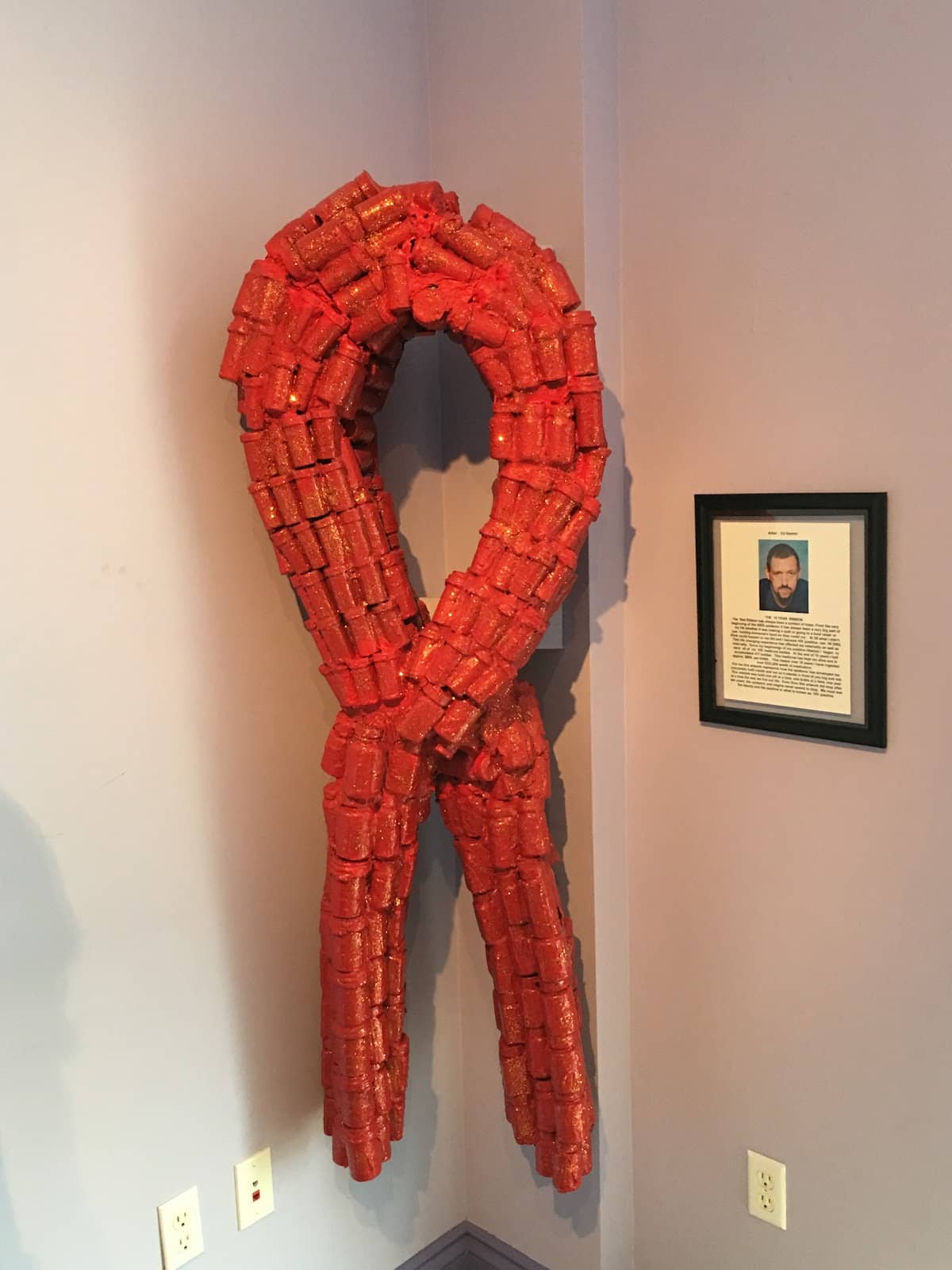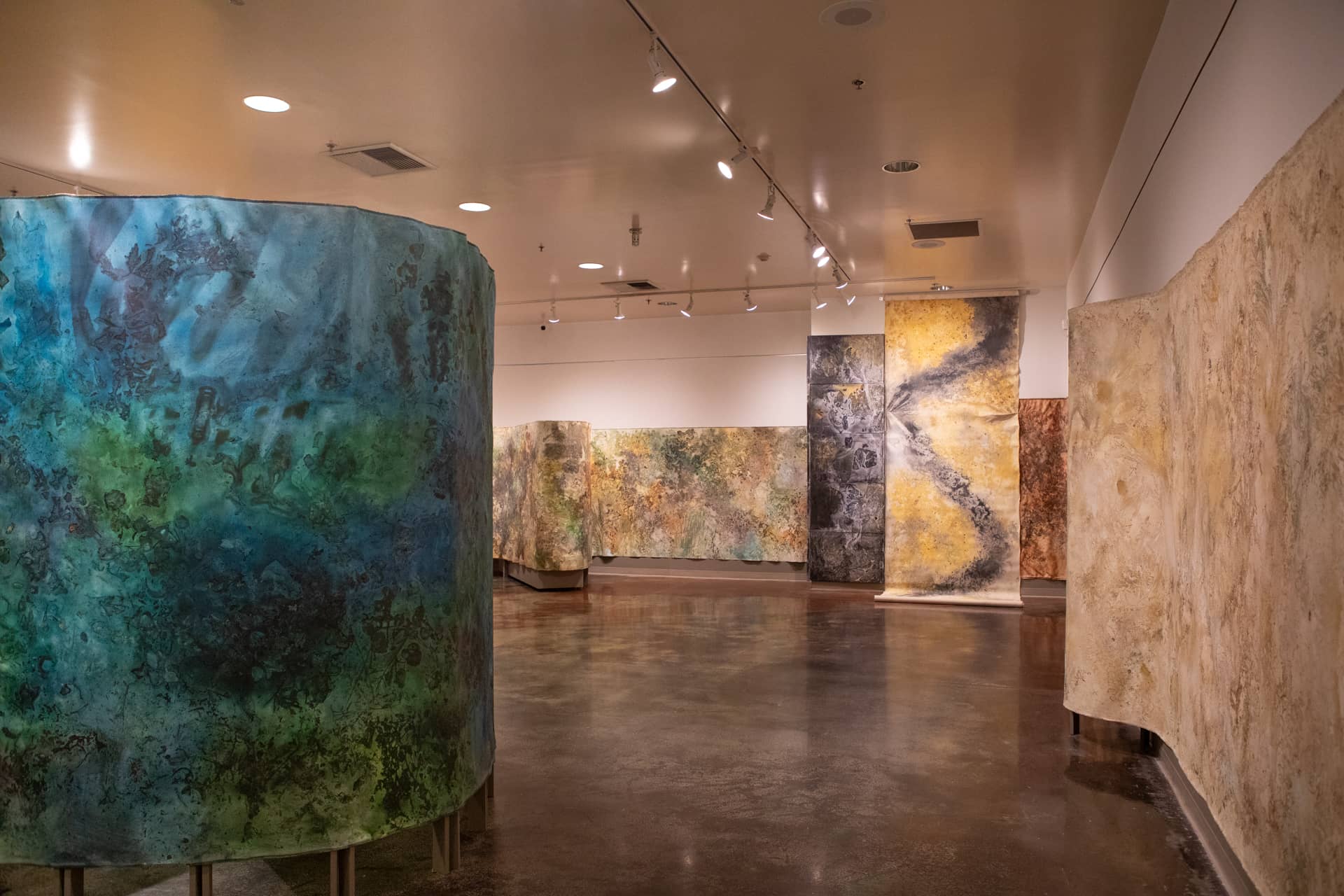
World AIDS Museum
A vital museum dedicated to educating about HIV/AIDS history, challenging stigma, and fostering dialogue through powerful exhibits and art.
Highlights
Must-see attractions

Social
From TikTok & Reddit
Best Time
Fewer crowds, more reflection

World AIDS Museum
Best Time
Fewer crowds, more reflection
Highlights
Must-see attractions
A vital museum dedicated to educating about HIV/AIDS history, challenging stigma, and fostering dialogue through powerful exhibits and art.
"Amazed by how much there was to see and learn, things I never knew and things I thought I knew."

Allocate ample time
You'll be amazed by how much there is to see and learn. Give yourself plenty of time to absorb the exhibits.
Engage with staff
The team is knowledgeable and can make the information feel accessible. Ask questions!

Highlights
Discover the most iconic attractions and experiences
Chronology of AIDS Exhibit
Trace the history of HIV/AIDS from its emergence to the present day through a timeline of key events and milestones.

Multimedia Storytelling
Engage with powerful narratives, personal stories, and artistic expressions that shed light on the human experience of HIV/AIDS.

Thought-Provoking Art
Explore temporary and permanent art installations that challenge stigma and foster dialogue about HIV/AIDS.
Plans like a pro.
Thinks like you
Planning Your Visit
Understand the Impact
Support a Vital Cause
Best Times
Insider Tips
from TikTok, Instagram & Reddit
Allocate ample time
You'll be amazed by how much there is to see and learn. Give yourself plenty of time to absorb the exhibits.
Engage with staff
The team is knowledgeable and can make the information feel accessible. Ask questions!
Consider donating
The museum is under-supported and relies on contributions to continue its vital work.
Prepare for reflection
The exhibits are powerful and can be emotionally resonant. It's a space for learning and remembrance.
Ignacio Darnaude accuses the museum of whitewashing AIDS—but the curators and some D.C. writers are standing up for the show.
Tips
from all over the internet
Allocate ample time
You'll be amazed by how much there is to see and learn. Give yourself plenty of time to absorb the exhibits.
Engage with staff
The team is knowledgeable and can make the information feel accessible. Ask questions!
Consider donating
The museum is under-supported and relies on contributions to continue its vital work.
Prepare for reflection
The exhibits are powerful and can be emotionally resonant. It's a space for learning and remembrance.
What Travellers Say
Reviews Summary
Visitors are consistently impressed by the World AIDS Museum's depth of information and its ability to educate and evoke reflection, even for those with prior knowledge. The museum is praised for its chronological exhibits and engaging multimedia content, though many note it is under-supported and deserves more community backing.
"I went here around 2017 and was very impressed by the museum. It jogged my memory of those AYDS weight loss candies. I learned a lot too. I hope the museum stays open. I became aware of the museum while working in a county school when some people came in to the school to educate the students about risky behaviors and HIV and they mentioned the museum."
Rose I.
"Glad to know that the World AIDS MUSEUM and Educational Center is located in South Florida. I had an opportunity to tour the museum and speak with their team and was impressed with their collection and amount of knowledge about the history of AIDS around the world."
Sean Russell
"Great place. Under supported. Deserves more support from people, government, legislators, City officials and the LGBT community as a whole. In need of a larger building to house all available exhibits. Any philanthropists out there looking to support a great cause please reach out to the museum!"
Angel Perez
What People Like
What People Dislike
Frequently Asked Questions
🚇 🗺️ Getting There
The World AIDS Museum is located in South Florida. Specific public transportation options and driving directions can be found on their official website or by using navigation apps. Parking information is usually available on their site as well.
Information regarding parking availability and any associated fees should be checked directly with the museum or on their website. Many visitors find it convenient to drive.
Museum hours can vary, so it's always best to check the official World AIDS Museum website for the most up-to-date information on opening and closing times before your visit.
Yes, the museum is a great destination for a day trip in South Florida. You can easily spend a few hours exploring the exhibits and learning about the history of HIV/AIDS.
Depending on your starting point in South Florida, public transportation options might be available. It's recommended to consult local transit schedules or use ride-sharing services for the most convenient access.
🎫 🎫 Tickets & Entry
Admission fees can vary, and it's advisable to check the World AIDS Museum's official website for current ticket prices and any potential discounts.
While advance booking might not always be mandatory, it's a good idea to check the museum's policy, especially if you plan to visit during peak times or special events.
The museum may offer discounts for students, seniors, or group visits. Inquire directly with the museum or check their website for details on available promotions.
Information regarding re-entry policies should be confirmed with the museum staff upon arrival or by checking their visitor guidelines on their website.
The museum may offer guided tours, which can enhance your understanding of the exhibits. Inquire about tour availability and schedules when you visit or check their website.
🎫 🧭 Onsite Experience
The 'Chronology of AIDS' exhibit is a central piece, offering a timeline of the epidemic. Also, explore their multimedia storytelling and rotating art installations for a comprehensive view.
The museum's content is educational and can be sensitive. It's recommended for older children and teens who can engage with the historical and social context of HIV/AIDS. Parental guidance is advised.
Photography policies can vary. It's best to check with museum staff or look for signage regarding whether photography is permitted, especially without flash, to protect the exhibits.
Most visitors spend at least 1-2 hours exploring the exhibits. If you want to deeply engage with the content and any temporary displays, allow for 2-3 hours.
The museum utilizes multimedia storytelling and may have interactive displays designed to enhance the learning experience and personal connection to the history of HIV/AIDS.
🍽️ 🍽️ Food & Dining
Typically, museums of this size do not have extensive dining facilities. It's advisable to check the museum's website or contact them directly to inquire about any available cafe or snack bar options.
Most museums have policies against bringing outside food and beverages into exhibit areas. Please check the museum's visitor guidelines for their specific rules on this.
The area around the museum likely offers various dining choices. Research local restaurants in the vicinity for a wide range of cuisines and price points.
Information about an on-site cafe or coffee shop should be confirmed directly with the World AIDS Museum. Some museums offer limited refreshments.
South Florida has a diverse culinary scene, so you'll likely find restaurants catering to various dietary needs, including vegetarian, vegan, and gluten-free options, in the surrounding areas.
📸 📸 Photography
Photography policies can vary. It's best to check with museum staff or look for signage regarding whether photography is permitted, especially without flash, to protect the exhibits.
Some exhibits, particularly those featuring sensitive artwork or loaned artifacts, may have restrictions on photography. Always adhere to posted signs and staff instructions.
Flash photography is generally prohibited in museums as it can damage delicate artifacts and artworks over time. Always ensure your flash is turned off.
Commercial photography or videography usually requires special permission and may incur fees. Contact the museum's administration in advance if you plan to conduct any professional shoots.
While respecting any photography rules, the art installations and the timeline exhibits often provide compelling visual narratives. The 'Chronology of AIDS' can be particularly impactful.
For Different Travelers
Tailored advice for your travel style
👨👩👧 Families with Kids
Consider visiting during quieter weekday mornings to allow for a more focused and less overwhelming experience. Discussing the museum's purpose and the importance of health education beforehand can also prepare children for what they will see and learn. The museum's staff are often noted for their warmth and ability to make complex information accessible, which can be a great resource for families.
❤️ Advocates and Educators
Visitors who are advocates often emphasize the museum's need for greater support, encouraging others to donate or volunteer to help sustain its vital mission. The museum's collection and its role in preserving the history of HIV/AIDS are seen as critical for future generations.
Deep Dives
In-depth insights and expert knowledge
The Museum's Mission and Impact
Visitors often express being deeply impressed by the depth of information and the emotional resonance of the exhibits, noting that they learned things they never knew, even if they thought they were already familiar with the topic. The museum's commitment to accessibility and its role in public health education are frequently highlighted by those who have visited.
Despite its important work, the museum is described as under-supported, highlighting a community need for greater awareness and financial backing. This underscores the ongoing importance of such institutions in preserving history and promoting public health awareness.
Navigating the Exhibits
Beyond the historical timeline, the World AIDS Museum features temporary exhibits that change periodically, ensuring that repeat visitors can always discover something new. These rotating displays often focus on specific aspects of the HIV/AIDS crisis, artistic interpretations, or community stories, adding layers of depth and relevance to the visitor experience.
Many visitors are struck by the multimedia storytelling and artistic expressions that complement the factual information. These elements help to humanize the statistics and historical events, making the experience more personal and impactful. The museum aims to create a space for reflection, education, and a deeper appreciation of the ongoing fight against HIV/AIDS.






Social
from TikTok, Instagram & Reddit